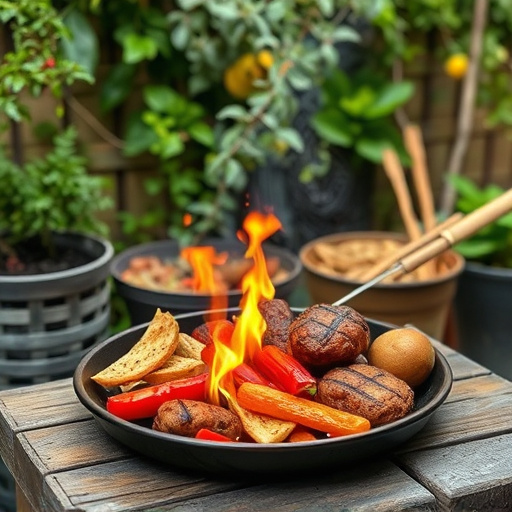Selecting the right ribs (baby back or spare rib) with good fat content is key for a successful BBQ rib recipe. Prepare them by removing the membrane and scoring the meat. Use a dry rub blend of salt, pepper, garlic powder, paprika, onion powder, mustard powder, and chili powder. Smoke ribs at 225°F-250°F (107°C-121°C) for 3-4 hours to achieve a tender texture. Braise them gently in minimal liquid to lock in juices. Glaze during the last 15 minutes of cooking for flavor and shine. Rest ribs uncovered for 10 minutes per pound post-cooking to redistribute juices and enhance flavors.
Unleash the smoky, mouthwatering magic of classic BBQ ribs! This guide takes you on a journey from selecting the perfect cut to mastering techniques that transform tough ribs into tender, juicy delights. Learn the art of dry rubbing for deep, savory flavors, smoking at ideal temperatures, and indirect heat cooking for even results. Discover braising methods to lock in moisture and finish with glistening glaze. Every step is tailored for that unforgettable BBQ rib recipe.
- Selecting and Preparing the Perfect Ribs
- Dry Rub: The Foundation of Flavor
- Smoking at the Right Temperature
- Mastering the Art of Indirect Heat Cooking
- Braising: Locking in Moisture and Juiciness
- Finishing Touches: Glazing for Shine and Taste
- Letting Them Rest: The Key to Tender Ribs
Selecting and Preparing the Perfect Ribs
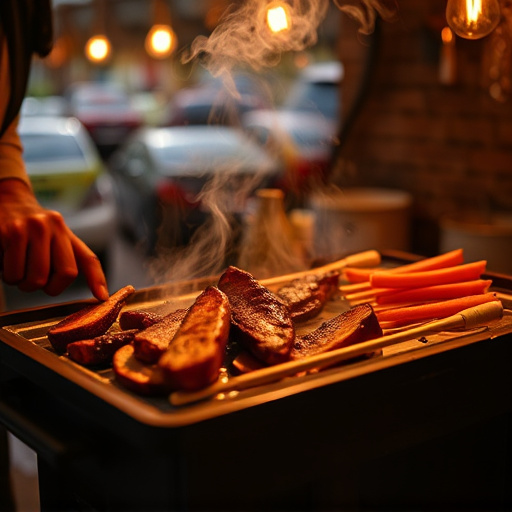
When it comes to classic barbecue techniques, selecting the right ribs is half the battle won. Look for meaty, well-marbled slabs with a good layer of fat; this ensures they’ll stay moist and tender during the slow cooking process. The most popular cuts are baby back or spare rib; choose according to your preference. Before starting your bbq rib recipe, prepare them by removing any membrane on the bone side—a step that’s key for achieving that perfect, fall-off-the-bone texture. Score the meat in a crosshatch pattern, being careful not to cut too deep into the bone; this helps the rub penetrate and ensures even cooking.
Dry Rub: The Foundation of Flavor
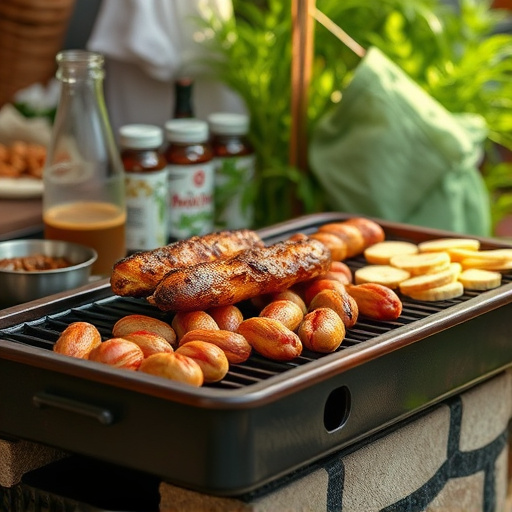
Dry rub is an essential component in achieving mouthwatering, perfectly cooked ribs in any classic BBQ rib recipe. This simple blend of spices acts as the foundation for flavor, imparting a complex and savory taste that’s hard to replicate. The key lies in balancing sweetness, heat, and acidity—a combination that creates a deep, rich flavor profile.
When preparing your dry rub, consider using a mix of coarse salt, pepper, garlic powder, paprika, onion powder, mustard powder, and chili powder. This blend should be liberally applied to both sides of the ribs before slow-roasting them in a low, smoky environment. The direct heat from the grill or smoker gently cooks the rub into the meat, creating a caramelized crust that enhances its natural juices.
Smoking at the Right Temperature
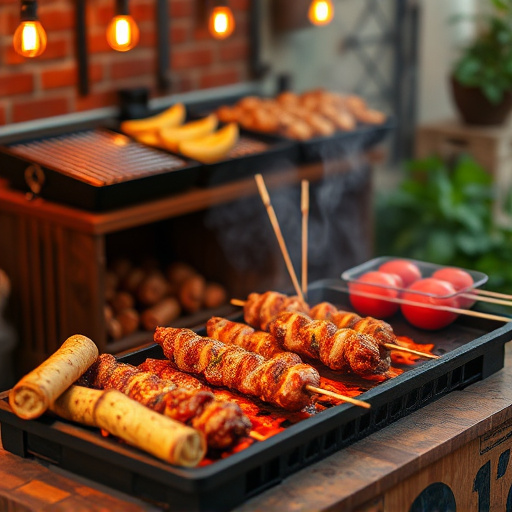
Smoking ribs at the right temperature is crucial for achieving that perfect, melt-in-your-mouth texture. The ideal range for smoking BBQ ribs is between 225°F to 250°F (107°C to 121°C). This slower cooking process allows the collagen in the meat to break down and transform into gelatin, making the ribs tender.
Maintaining a consistent temperature ensures even cooking and prevents the ribs from drying out or becoming overly charred. Most smokers have a control knob for adjusting heat, so set it and forget it—let the smoke do its magic while you tend to other aspects of your delicious BBQ rib recipe.
Mastering the Art of Indirect Heat Cooking
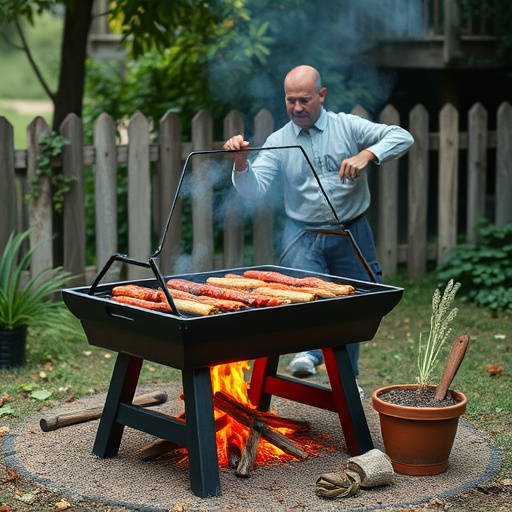
Mastering the art of indirect heat cooking is key to achieving perfectly cooked, tender BBQ ribs in any bbq rib recipe. Unlike direct heat methods that sear the surface quickly, indirect heat allows for slow and steady cooking, transforming tough rib meat into mouthwatering delicacy. This technique ensures even heating throughout the entire rack, preventing overcooking or charring while retaining moisture and flavor.
Whether you’re using a charcoal grill, gas smoker, or electric BBQ, maintaining a consistent temperature is crucial. For ribs, aim for a slow cook between 225°F to 250°F (107°C to 121°C). This process can take several hours, but the result is ribs that slip off the bone, satisfyingly juicy and brimming with smoky, savory goodness—the quintessential BBQ rib experience.
Braising: Locking in Moisture and Juiciness
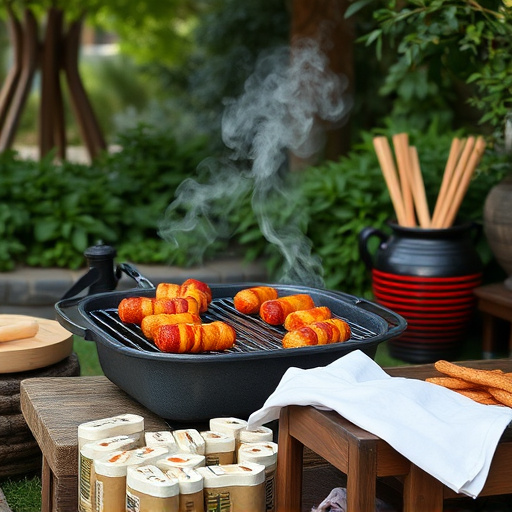
Braising is a classic barbecue technique that’s often overlooked, yet it plays a pivotal role in crafting juicy, tender ribs. This slow-cooking method involves gently simmering meat in a covered pot with a small amount of liquid, allowing it to gently break down collagen and absorb flavors. For a perfect BBQ rib recipe, braising is key to locking in moisture and juiciness. The low and slow approach ensures that the ribs remain plump and tender, with a rich, flavorful sauce that clings to every bite.
By braising your ribs, you can achieve that coveted fall-off-the-bone texture without drying them out. This technique allows the natural juices to redistribute throughout the meat, creating a mouthwatering experience that’s hard to replicate through other cooking methods. So, for those seeking the ultimate BBQ rib recipe, don’t skip the braising step—it’s the secret ingredient that transforms ordinary ribs into an extraordinary culinary delight.
Finishing Touches: Glazing for Shine and Taste
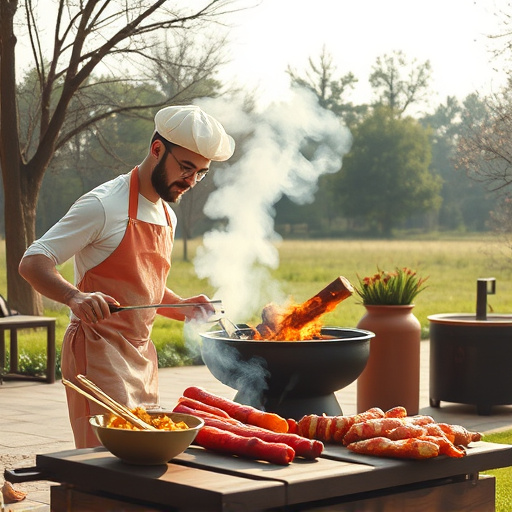
After hours of slow-cooking, your ribs are almost ready to be devoured. The final step in this classic BBQ rib recipe is adding a glaze that will bring an extra layer of flavor and give them a beautiful, shiny finish. Glazing isn’t just about aesthetics; it also helps to tenderize the meat further, locking in all those delicious juices.
Choose a glaze that complements your ribs’ flavors—it could be as simple as a mix of BBQ sauce and honey or something more complex with spices and fruit purees. Brush it on generously during the last 15 minutes of cooking to achieve that perfect, caramelized topcoat. The result? Ribs that are not only mouthwatering but also visually appealing, making them the centerpiece of any BBQ gathering.
Letting Them Rest: The Key to Tender Ribs
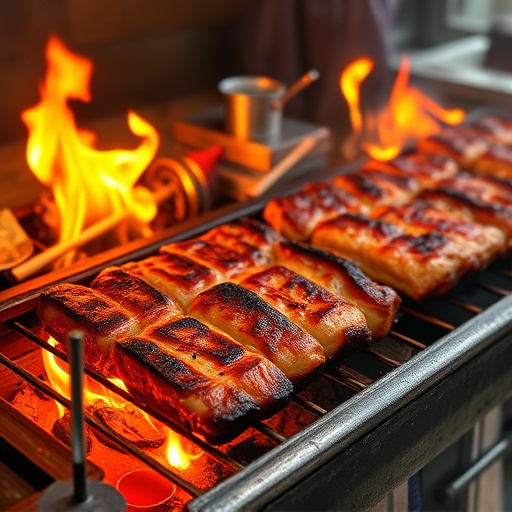
After slathering your ribs with a delicious BBQ sauce and cooking them to perfection over low, indirect heat, the final step in creating tender, juicy ribs is letting them rest. This resting period allows the magic of slow-cooking to continue, ensuring that the meat remains moist and tender. During this time, the juices redistribute throughout the ribs, infusing every bite with rich, smoky flavors from the BBQ sauce.
A good rule of thumb is to let your ribs rest for at least 10 minutes per pound, allowing them to cool down slightly and firm up. This resting period can make a significant difference in the overall texture and taste of your barbecue rib recipe. During this time, avoid the temptation to cut into the ribs immediately; instead, let them sit, uncovered, on a cutting board or wire rack, allowing any remaining juices to settle.
